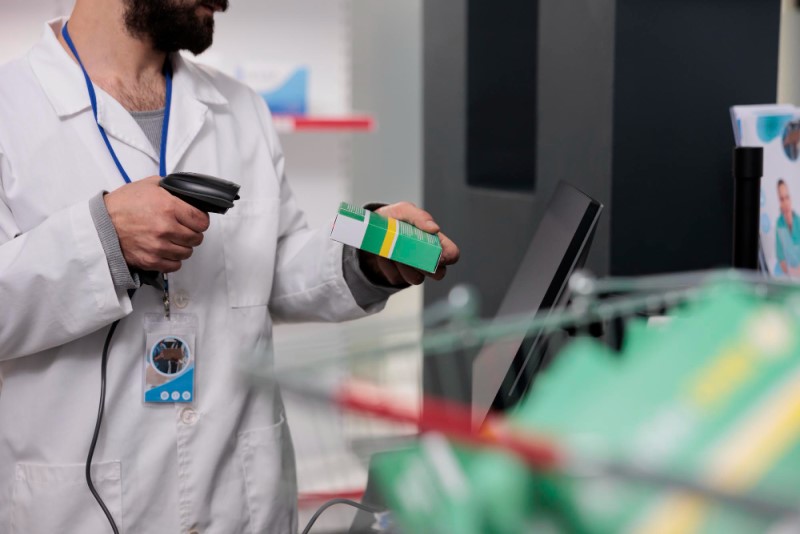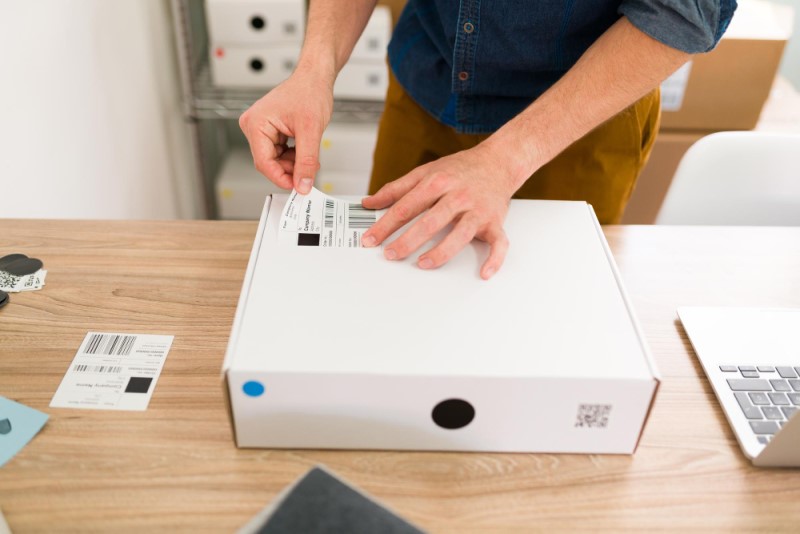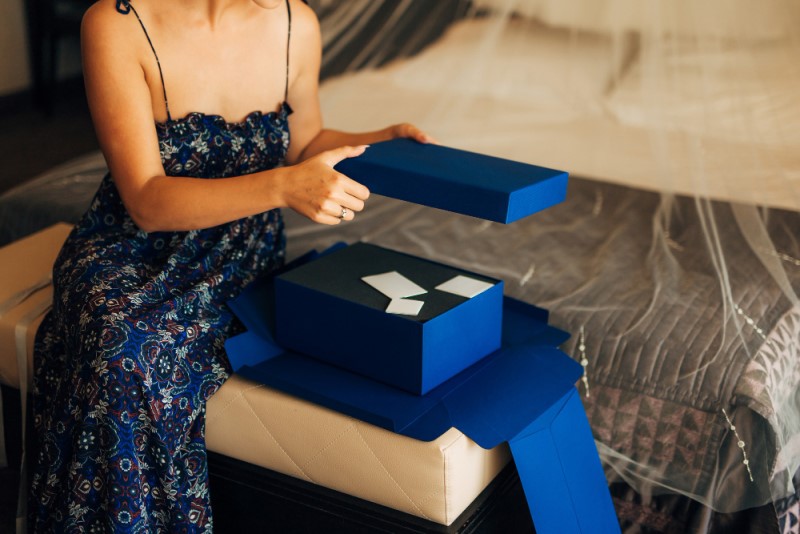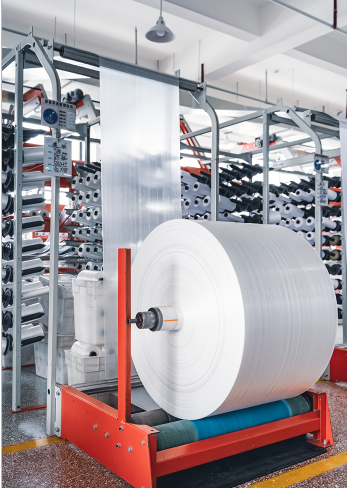Fälschungssichere Verpackungen sind für den Schutz Ihrer Marke, Ihrer Verbraucher und des Wertes Ihrer Produkte auf dem heutigen globalen Markt von entscheidender Bedeutung.
Da gefälschte Waren immer raffinierter und weiter verbreitet werden, insbesondere in Branchen wie der Lebensmittel-, Pharma- und Elektronikbranche, müssen Marken schnell handeln.
Fälschungssichere Verpackungen, die durch Technologien wie QR-Codes, unsichtbare Tinte oder Chipcodes verstärkt werden, verhindern nicht nur Betrug. Sie geben Ihren Kunden auch die Gewissheit, dass sie das Original in den Händen halten.
Unter fälschungssicherer Verpackung versteht man Design- und Materialmerkmale, die dabei helfen, die Echtheit eines Produkts zu überprüfen.
Es kann eine Kombination aus sichtbaren und versteckten Markierungen enthalten, wie etwa Hologramme, spezielle Etiketten, unsichtbare Codes oder manipulationssichere Siegel.
In Kombination mit moderner Fälschungsschutztechnologie machen diese Elemente es Fälschern extrem schwer, Verpackungen zu replizieren und Fälschungen als Originale auszugeben.
Eine der gängigsten Methoden zur Abschreckung von Fälschern sind fälschungssichere Etiketten. Diese speziell entwickelten Etiketten können Folgendes enthalten:
Diese Etiketten werden auf Verpackungen angebracht, damit Verbraucher oder Einzelhändler das Produkt schnell authentifizieren können.
Die Technologie zum Schutz vor Fälschungen entwickelt sich rasant weiter. Unternehmen können heute aus einer Vielzahl von Tools und Systemen wählen, um die Verpackungssicherheit zu erhöhen:
Aus diesen Gründen sollte jede Marke die Integration fälschungssicherer Verpackungen ernsthaft in Erwägung ziehen:
Gefälschte Produkte können Ihren Ruf schädigen und die Kundenbindung mindern. Sichere Verpackungen geben Ihren Kunden die Gewissheit, das Original zu erhalten.
In Branchen wie der Lebensmittel- und Pharmaindustrie können gefälschte Produkte ernsthafte Gesundheitsrisiken bergen. Fälschungssichere Verpackungen tragen dazu bei, dies zu verhindern, indem sie eine einfache Produktauthentifizierung ermöglichen.
Einige Branchen schreiben mittlerweile den Einsatz fälschungssicherer Technologien gesetzlich vor. Die Einhaltung dieser Standards sichert die Konformität und Wettbewerbsfähigkeit Ihres Unternehmens.
Wenn Sie sich besonders viel Mühe geben, Ihre Produktverpackung zu sichern, zeigen Sie damit auch, dass Ihre Marke Wert auf Qualität, Sicherheit und Innovation legt – Faktoren, die die Kaufentscheidungen beeinflussen können.
Trotz seiner Vorteile müssen einige Herausforderungen bewältigt werden:
Diese Faktoren können zwar als Hürden erscheinen, doch der langfristige Wert – Markenschutz, Kundentreue und Einhaltung gesetzlicher Vorschriften – macht die Investition lohnenswert.
Ihr Fälschungsschutzsystem ist nur dann wirksam, wenn die Verbraucher wissen, wie es zu nutzen ist. Marken sollten Folgendes beinhalten:
Indem Verbraucher dazu ermutigt werden, die Echtheit eines Produkts zu überprüfen, wird das Bewusstsein dafür gestärkt und sie werden aktiv in den Markenschutz einbezogen.
Es gibt keine Einheitslösung für fälschungssichere Verpackungen.
Verschiedene Branchen sind unterschiedlichen Bedrohungen durch Produktfälscher ausgesetzt und müssen unterschiedliche gesetzliche Standards einhalten.
Daher werden die zur Bekämpfung von Produktfälschungen eingesetzten Werkzeuge und Techniken individuell an den Wert, die Verwendung und das Risikoniveau des Produkts angepasst.

Produktfälschungen in der Pharmaindustrie können lebensbedrohliche Folgen haben.
Um zu verhindern, dass gefälschte Medikamente in die Lieferkette gelangen, verwenden Unternehmen die Serialisierung. Dabei weisen sie jeder Packung eine eindeutige Kennung zu, die während der gesamten Vertriebskette verfolgt werden kann.
Manipulationssichere Etiketten machen deutlich, ob ein Produkt geöffnet oder verändert wurde, was den Verbrauchern hilft, potenzielle Gefahren zu erkennen.
Darüber hinaus ermöglichen Track-and-Trace-Systeme Gesundheitsbehörden und Einzelhändlern, den Weg eines Arzneimittels vom Hersteller zur Apotheke zu verfolgen.
Zusammen bilden diese Funktionen eine sichere Lieferkette, die die öffentliche Gesundheit schützt.
Wenn es um Lebensmittelsicherheit geht, ist Authentizität das A und O. Gefälschte oder verunreinigte Produkte können das Vertrauen der Verbraucher schädigen und zu rechtlichen Haftungsansprüchen führen.
Um dem entgegenzuwirken, verwenden Hersteller QR-Codes, mit denen sich die Herkunft von Produkten nachverfolgen lässt – insbesondere in Premium- oder sensiblen Kategorien wie Wein, Babynahrung oder Importwaren.
Einige Marken verwenden außerdem manipulationssichere Siegel, die den Käufern die Gewissheit geben, dass der Inhalt nicht verändert wurde.
Fälschungssichere Verpackungen in diesem Sektor unterstützen sowohl die Rückverfolgbarkeit als auch die Transparenz von Lebensmitteln und helfen den Verbrauchern, sichere Entscheidungen zu treffen.

Aufgrund ihrer hohen Kosten und Komplexität sind elektronische Geräte ein bevorzugtes Ziel für Fälscher.
Ob gefälschte Ladegeräte oder Handy-Imitationen: Diese Imitate stellen oft ein Sicherheitsrisiko dar.
Um dem entgegenzuwirken, integrieren Elektronikhersteller RFID-Tags, NFC-Chips und holografische Aufkleber in ihre Verpackungen.
Diese Elemente bestätigen nicht nur die Echtheit des Produkts, sondern helfen auch bei der Bestandsverfolgung und Identifizierung von Graumarkt-Wiederverkäufern.
Im Bereich High-End- oder Smart-Tech experimentieren einige Unternehmen mit App-basierten Authentifizierungssystemen, bei denen Käufer den Artikel vor der ersten Verwendung überprüfen müssen.

Der Mode- und Luxusgüterindustrie entstehen durch Produktfälschungen jährlich Verluste in Milliardenhöhe.
Der Schutz der Exklusivität und des Markenwerts erfordert eine hochentwickelte, fälschungssichere Verpackung.
Viele Luxusmarken nutzen mittlerweile die Blockchain-Technologie, um digitale Eigentumsnachweise zu erstellen. So können Verbraucher die Geschichte jedes Artikels von der Produktion bis zum Kauf überprüfen.
Andere verlassen sich auf benutzerdefinierte Chipcodes, UV-gedruckte Etiketten oder in Logos versteckten Mikrotext – Elemente, die ohne fortschrittliche Tools nahezu unmöglich zu replizieren sind.
Diese Eigenschaften schrecken nicht nur Fälscher ab, sondern steigern auch das Prestige und das Vertrauen in die Marke.
Die Zukunft fälschungssicherer Verpackungen basiert auf intelligenter Technologie, Datenintegration und leichter zugänglichen Tools, von denen Unternehmen jeder Größe profitieren.
Diese Innovationen werden die Art und Weise verändern, wie Produkte geschützt, verfolgt und überprüft werden.
XIFA bietet Verpackungslösungen mit integrierten Fälschungsschutzfunktionen. Unsere Designoptionen umfassen:
Diese Technologien lassen sich an Ihre Verpackung anpassen und auf Ihren Produkttyp zuschneiden. Sie helfen Ihnen, sich gegen Nachahmungen zu schützen und das Vertrauen Ihrer Kunden zu bewahren.
Fälschungssichere Verpackungen sind nicht länger nur ein nettes Extra – sie sind auf dem heutigen wettbewerbsintensiven und risikobehafteten Markt eine Notwendigkeit.
Mithilfe von fälschungssicheren Etiketten und Technologien können Sie Ihre Marke schützen, Ihre Lieferkette sichern und, was am wichtigsten ist, Ihren Kunden ein beruhigendes Gefühl geben.
Bei XIFA sind wir auf leistungsstarke Verpackungslösungen mit anpassbaren Sicherheitsfunktionen spezialisiert, die auf die Anforderungen Ihres Unternehmens und Ihrer Branche zugeschnitten sind. Kontaktieren Sie uns Heute!




